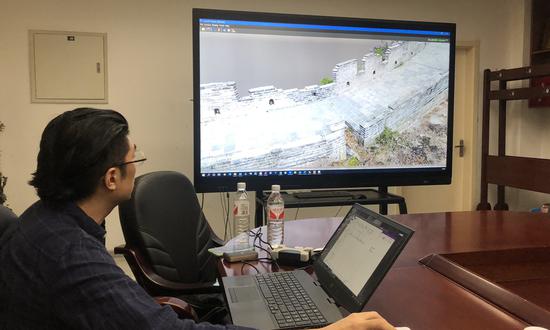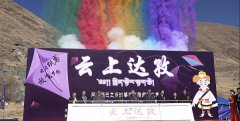 Caption: Zhai Fei, a technician of Beijing Institute of Conservation and Design of Ancient Architecture, shows a high-precision three-dimensional model of the Great Wall. (Photo: Li Qiao/GT)
Caption: Zhai Fei, a technician of Beijing Institute of Conservation and Design of Ancient Architecture, shows a high-precision three-dimensional model of the Great Wall. (Photo: Li Qiao/GT)
High-techs such as drones and satellite remote sensing tools are used to document and survey the Badaling Great Wall and create a 鈥渄igital Great Wall,鈥




